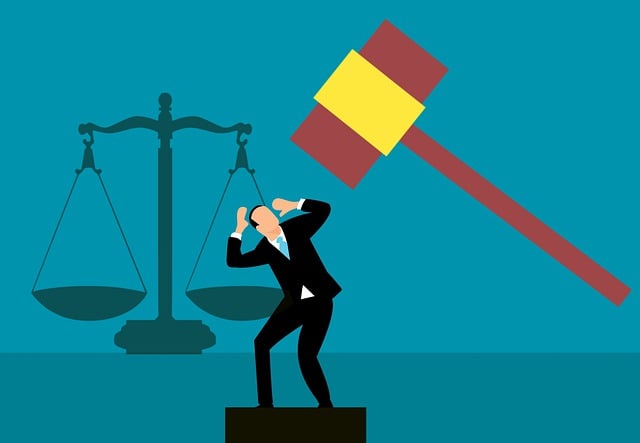Documenting Bicycle Accident Medical Bills: A Comprehensive Guide to Compensation

After a bicycle accident, documenting medical bills is crucial for compensation. Gather and organize…….
In an era where cycling has become a popular mode of transportation and recreational activity worldwide, understanding the financial implications of bicycle accidents is more crucial than ever. “Bicycle accident medical bills” refer to the array of expenses incurred as a result of injuries sustained in cycling incidents, encompassing a complex interplay of healthcare costs, legal considerations, and personal recovery. This comprehensive article aims to delve into the multifaceted world of bicycle accident medical bills, exploring their definition, global impact, economic implications, technological advancements, regulatory frameworks, challenges, case studies, and future prospects. By the end, readers will gain valuable insights into the intricate web surrounding these bills and their significance in ensuring safety, justice, and effective healthcare for cyclists worldwide.
Bicycle accident medical bills encompass the financial burden associated with medical treatment, rehabilitation, and legal expenses resulting from cycling-related injuries. These bills typically cover a range of costs, including:
The concept of compensating for bicycle accident medical bills has evolved over time, reflecting societal shifts in cycling popularity and safety awareness. Historically, many cyclists bore the full cost of their medical care, often without adequate insurance coverage. However, with increasing cycling advocacy and improved legal frameworks, there is a growing emphasis on holding responsible parties accountable for the damages they cause. This shift ensures that cyclists receive necessary healthcare and financial support during and after their recovery, fostering a safer cycling environment.
The landscape of bicycle accident medical bills varies significantly across regions, influenced by factors such as healthcare systems, legal frameworks, economic development, and cultural attitudes towards cycling.
North America and Europe: These regions have well-established legal systems and robust healthcare infrastructure, leading to comprehensive insurance coverage for bicycle accidents. Countries like the United States and the Netherlands have specific laws regarding cyclist rights and compensation, ensuring that medical bills are largely covered by insurance or through legal settlements.
Asia Pacific: The approach to bicycle accident medical bills varies across this diverse region. Some countries, like Japan and Australia, have robust insurance systems supporting cyclists, while others struggle with inadequate coverage. Rapid urbanization in Asia presents unique challenges, as cycling infrastructure lags behind the growing number of urban cyclists.
Latin America and Africa: In these regions, access to healthcare and legal representation can be limited, leading to a greater financial burden on individuals involved in bicycle accidents. However, some countries are implementing innovative solutions, such as community-based insurance schemes and government-funded healthcare programs, to address these challenges.
The economic implications of bicycle accident medical bills are multifaceted, impacting both the individual and the broader economy:
Healthcare Costs: Rising healthcare expenses globally have led to increased pressure on insurance providers and governments to manage costs effectively. Bicycle accidents contribute to these rising costs, underscoring the need for proactive measures to prevent injuries and streamline compensation processes.
Insurance Premiums: Cycling-related insurance premiums vary widely across regions, influenced by factors like local legislation, accident rates, and risk perception. In areas with stricter safety regulations and lower accident frequencies, insurance is generally more affordable.
Economic Impact on Individuals: For many cyclists, particularly those from lower-income backgrounds, the financial burden of medical bills can be overwhelming. This can lead to long-term economic strain, especially if lost income and disability benefits are not adequately covered.
Bicycle accident medical bills play a significant role in shaping economic systems, particularly in regions with substantial cycling populations:
Healthcare Sector: They contribute to the overall demand for healthcare services, influencing hospital capacity, specialist availability, and the development of specialized rehabilitation programs.
Insurance Industry: The financial implications of these bills drive insurance companies to assess risk, adjust policies, and invest in preventive measures to mitigate claims.
Government Budgets: Governments allocate resources to support cyclists’ rights, healthcare systems, and legal frameworks related to bicycle accidents, reflecting societal priorities.
Technological advancements have revolutionized the landscape of bicycle accident medical bills by improving treatment outcomes and reducing costs:
Advanced Medical Devices: Newer technologies, such as improved prosthetics, advanced orthotics, and precision surgery tools, enhance recovery for severely injured cyclists. These innovations can significantly impact rehabilitation timelines and overall healthcare expenses.
Telemedicine and Remote Monitoring: During the COVID-19 pandemic, telemedicine gained prominence, allowing remote monitoring of patient conditions and reducing unnecessary in-person visits. This trend is expected to continue, improving access to care and potentially lowering costs.
Digital Health Records: Electronic health records facilitate efficient information sharing between healthcare providers, reducing duplicate tests and improving treatment continuity, ultimately saving costs.
Innovations focused on cycling safety have the potential to prevent accidents and reduce the severity of injuries) that meet their needs.
Bicycle accident medical bills represent a complex interplay of healthcare, law, and personal recovery. By understanding the evolving landscape of these bills, cyclists can navigate the system more effectively, ensuring access to necessary care and compensation while promoting safety and accountability on the roads. As technology and societal norms continue to evolve, so too will the mechanisms for addressing bicycle accidents and their consequences.

After a bicycle accident, documenting medical bills is crucial for compensation. Gather and organize…….

Bicycle accident medical bills can cause significant financial strain and emotional stress, especial…….

Bicycle accident victims face a complex web of medical bills, requiring transparency and clear commu…….

After a bicycle accident, understanding your insurance rights and navigating claims is crucial for m…….

Navigating bicycle accident medical bills requires a multi-step approach. Start by gathering detaile…….

Medical liens play a vital role in compensating healthcare providers and securing fair settlements f…….

In bicycle accidents, managing medical bills is crucial as they can quickly accumulate and impact ov…….

After a negligence-caused bicycle accident, understanding your rights and gathering comprehensive do…….

In a bicycle accident, understanding liability and insurance coverage is crucial for managing medica…….

Understanding Your Rights and Responsibilities After a Bicycle AccidentGathering and Organizing Medi…….